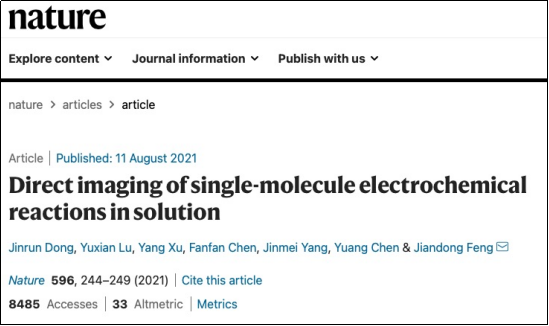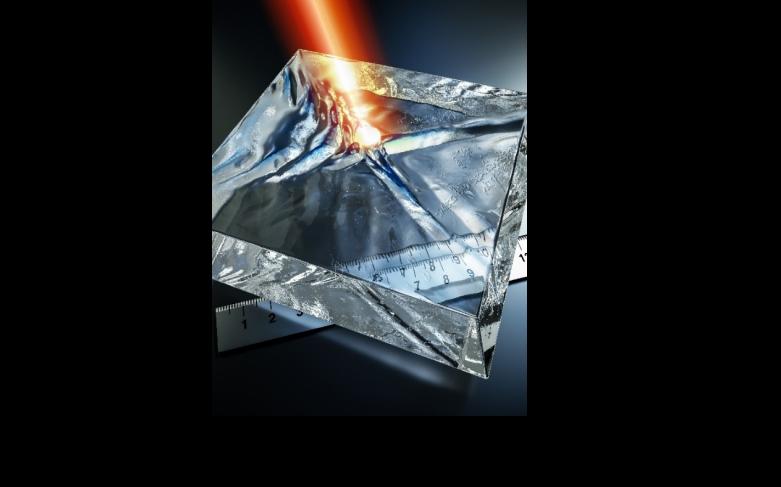On August 18th, a paper titled Ghost hyperbolic surface polaritons in bulk anisotropic crystals was published in Nature by Prof. Li Peining research team from Wuhan National Laboratory for Optoelectronics and the School of Optical and Electronic Information, HUST. The paper is a collaborative work with National University of Singapore, City University of New York, and the National Center for Nanoscience and Technology of China. The study proves the existence of ghost hyperbolic polaritons in traditional birefringent crystals, revolutionizes the textbook definition of polaritons in basic physics, and provides significant implications for the original and fundamental research in fields including condensed matter physics, optics physics, andelectromagnetism etc.


Polaritons are hybrid electromagnetic states originating from the coupling between photons and material excitations. They show extraordinary optical properties for realizing high-sensitivity, ultracompact, and low-loss photonic devices in optical imaging, sensing, communications and other applications. Renowned physicist Huang Kun first explored the physics of polaritons in 1951. He established a basic model for describing the physics of phonon polaritons, the coupling photons and phonons (lattice vibrations) in ionic crystals. Later, various types of polaritons have been revealed and studied. So far, two types of propagating polaritons have been revealed: surface polaritons (SPs) and volume polaritons (VPs). The VPs propagate inside the materials with a purely real-valued out-of-plane wavevector. By contrast, SPs propagating along the surface of the materials exhibit a purely imaginary out-of-plane wavevector.

Fig.1 Artisticillustration ofghosthyperbolicpolaritonspropagating away from a point-like source on calcite surface
In this work, the team theoretically proposed and experimentally demonstrated a fundamentally new type of propagating polariton modes, ghost hyperbolic polaritons (g-HPs), arising in a uniaxial crystal with a tilted optic axis (see the illustration in Fig.1). The g-HPs are an atypical non-uniform surface wave solution of Maxwell’s equations, arising at the surface of uniaxial materials in which the optic axis is slanted with respect to the interface. They exhibit an unusual bi-state nature, being both propagating (phase-progressing) and evanescent (decaying) within the crystal bulk (see Fig.2). The g-HPs are the polaritonic analog to the recently predicted ghost waves – a special type of non-uniform electromagnetic waves- predicted by Prof. Narimanov from Purdue University. However, the experimental observation of ghost waves or g-HPs has remained elusive.

Fig.2 Comparison of ghost polaritons (top panel), surface polaritons (middle panel) and volume polaritons (bottom panel).
Researchers used a high-quality crystal of calcite for an experimental demonstration of the g-HPs. Calcite is a well-known uniaxial crystal for the optical birefringence effect. In the work, researchers experimentally demonstrated the existence of the g-HP in calcite. They used a calcite crystal with its optic axis aligned with an angle of 23.3° to the surface. Using scattering-type scanning near-field optical microscope (s-SNOM), researchers successfully imaged the propagation of antenna-launched g-HPs propagating with in-plane hyperbolic dispersion on the calcite crystal surface (see Fig.3). These g-HPs show long-distance (over 20 mm), ray-like propagation over the surface.

Fig.3 Left:Schematic of near-field imaging experiments; Middle:Experimental near-field image of antenna-launched g-HPs;Right: The distribution of g-HPs wavevector in momentum space.
Moreover, researchers also showed that controlling the orientation of the optic axis enables manipulation of g-HPs dispersion, thus manipulating the propagation of g-HPs at a fixed frequency. In addition to calcite, researchers also predicted that the g-HPs could be found in other natural anisotropic crystals, e.g., quartz and sapphire. Owing to three-dimensional nature, bulk anisotropic crystals provide an additional means to support and control exoticpolariton waves for applications in imaging, bio-sensing, light guiding,information transfer, infrared polarization elements and enhancednonlinearity at a deeply subwavelength scale.
Ma Weiliang, a doctoral student of HUST, Chen Runkun, a post-doctoral student of HUST, Hu Guangwei, a post-doctoral student of NUS, Hu Debo, an associate researcher at NCNST, are the first co-authors of this paper. Prof. Li Peining and Prof. Zhang Xinliang from HUST, Prof. Qiu Chengwei from NUS, Researcher Dai Qing from NCNST, and Prof. Andrea Alù from CUNY, are the corresponding co-authors. This work has been granted support from the Ministry of Science and Technology’s Key R&D Program and the National Natural Science Foundation of China. Prof. Li’s team has been dedicated to the research on polaritons for years, so far, the team has published 1 paper on Science, 2 papers on Nature, 1 paper on Nature Materials, and 2 papers on Nature Communications.
Link to the paper:https://www.nature.com/articles/s41586-021-03755-1
Writtenby: Li Peining, Ma Weiliang, Gou Bingbing
Edited by: Scott, Peng Yumeng
